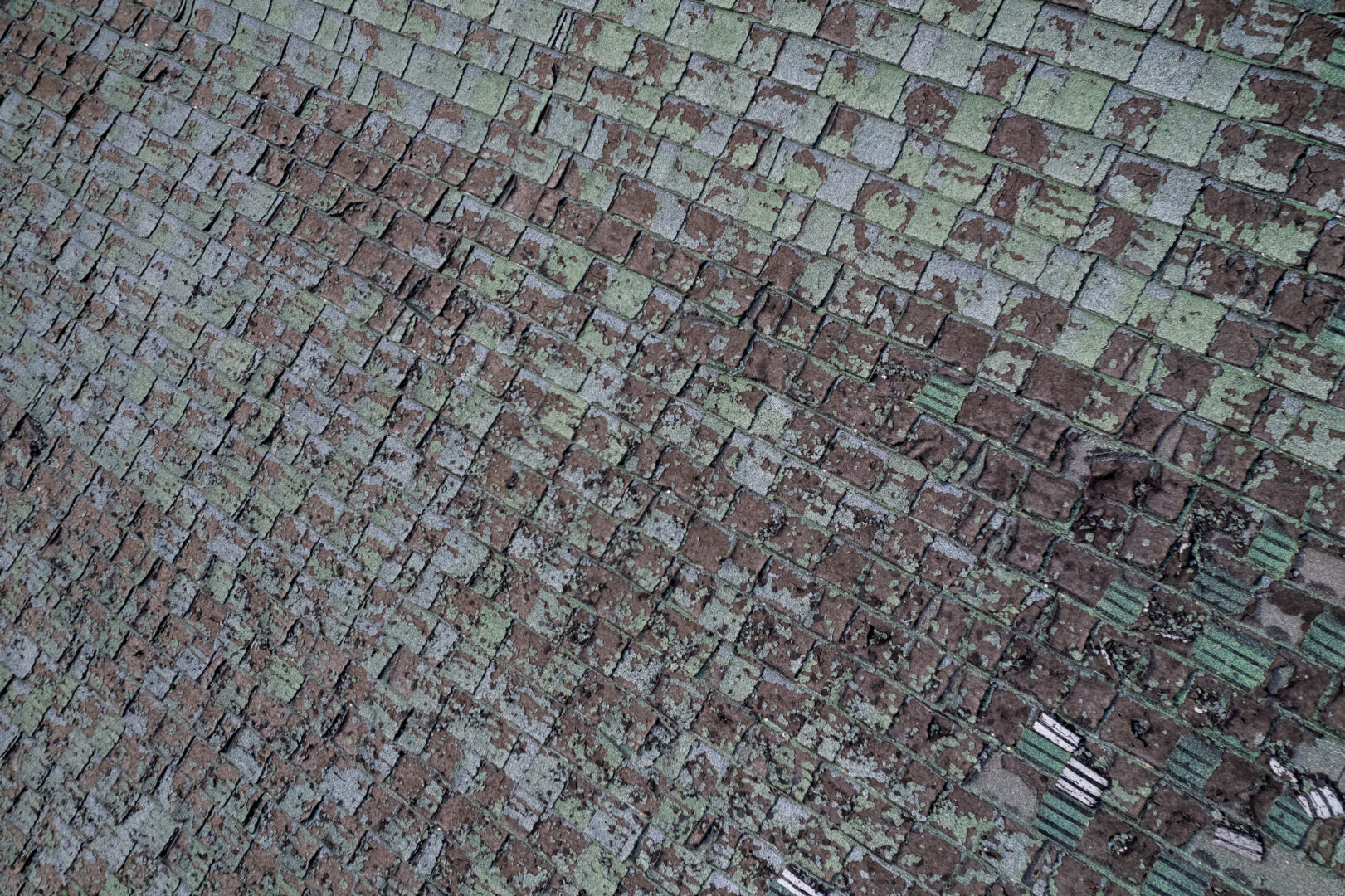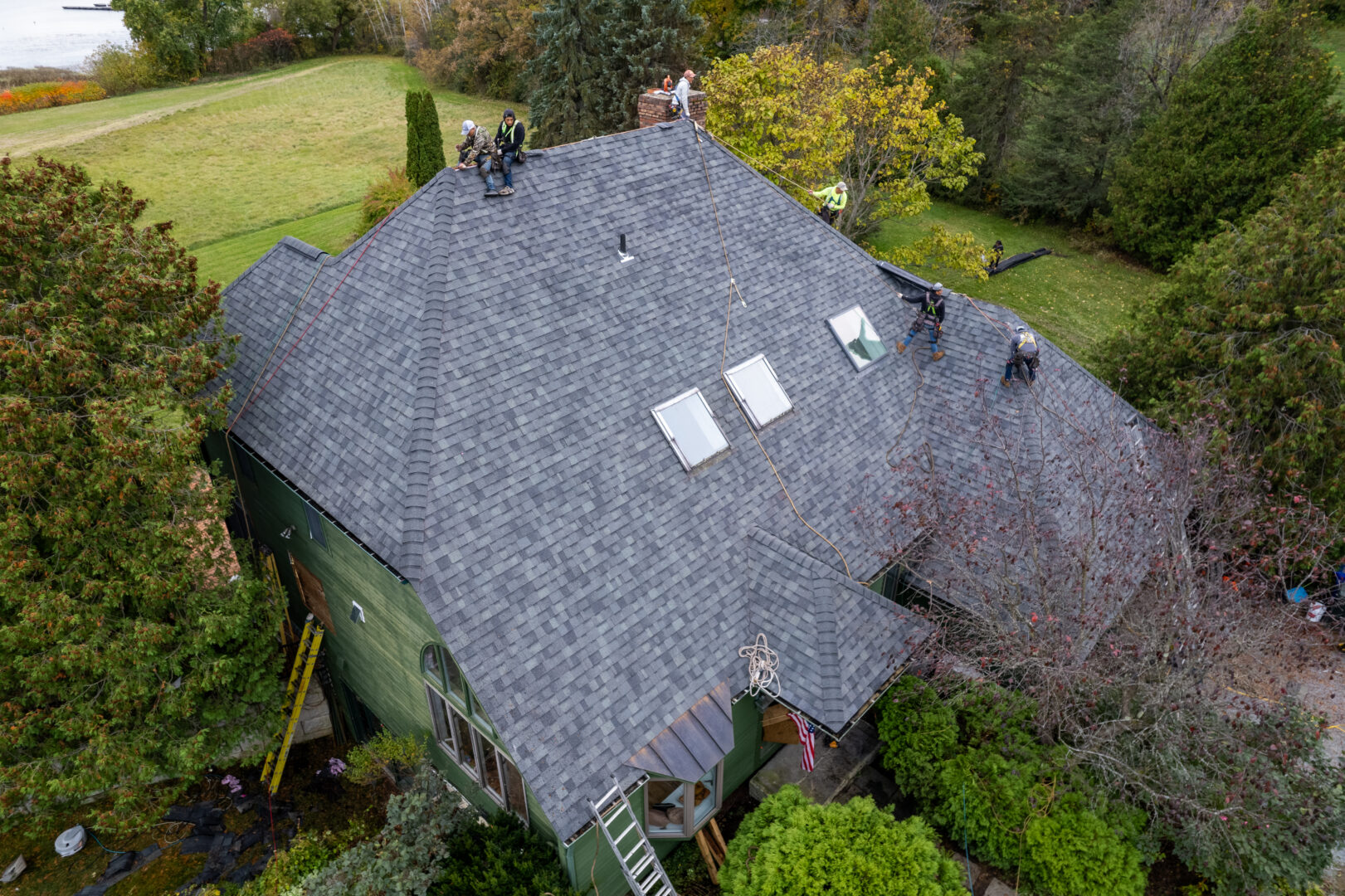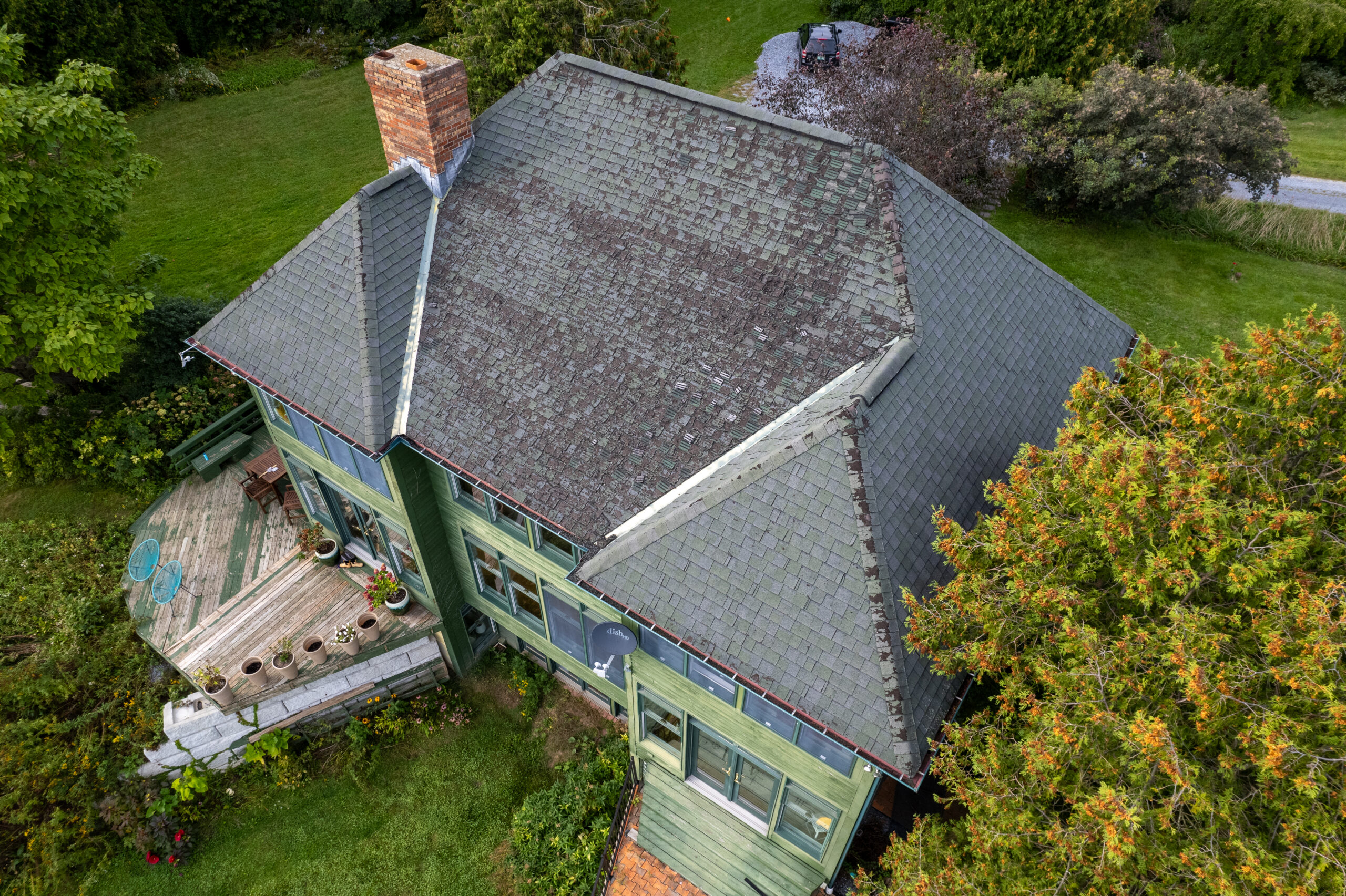As the autumn nights draw in, that gentle rustling in the attic might not just be the settling of your home – it could be the telltale sign of an unexpected lodger: bats. While these nocturnal creatures play a vital role in our ecosystem by controlling insect populations, having them take up residence in your roof can present challenges, causing homeowners to search for answers on how to get rid of bats in roofs.
From potential health hazards to structural damage, dealing with a bat infestation requires a delicate balance to ensure the well-being of both homeowners and the bats themselves. In this blog post, we’ll explore the implications of bats in roofs, the potential issues they pose, and the humane and effective steps to safely bid them farewell from your home.
Can Bats Get In Through the Roof? Can They Get In Under Shingles?
While bats are known for roosting in dark and secluded places, it’s less common for them to enter homes directly through the roof. However, it’s not entirely impossible. If there are gaps, cracks, holes, or openings in the roof structure, bats may use these to access the attic.
Damaged, rotting, or missing shingles in particular tend to be roof entry points for bats, as they create pockets of darkness or gaps that serve as attractive spots for bats seeking shelter. Being small, flexible, and able to squeeze through holes less than an inch wide, bats can exploit these openings and gain access to your home’s interior.

The space between the roof and the attic also becomes more accessible when shingles are damaged. Bats often seek out attics as roosting sites, and if they can easily access this space through damaged shingles, they may choose it as a suitable habitat. Attics are often warm, especially during colder seasons, providing a suitable environment for bats. Damaged shingles may compromise the insulation of the attic, making it more appealing to bats seeking a safe and warm roost.
Is It Bad to Have Bats in Your Roof? Do Bats Damage Roofs?
While bats are valuable contributors to the ecosystem, having them in your roof or attic can pose several problems for homeowners. Here are some reasons why it’s generally considered bad to have bats in your roof:
1. Health Risks: Bat droppings, also known as guano, can accumulate in large quantities. Guano can harbor fungi such as Histoplasma capsulatum, which can cause respiratory diseases in humans when the spores become airborne.
2. Odor Issues: The accumulation of bat guano can also produce a strong, unpleasant ammonia smell. This odor can permeate through the living spaces of your home, making it uncomfortable for occupants.
3. Structural & Insulation Damage: If bats have been roosting in your roof for an extended period, it could lead to structural damage. In terms of waste, bat urine is acidic and can corrode certain building materials over time, while bat guano can become dry and combustible, eventually posing a fire hazard if exposed to a spark or flame. Additionally, bats may bring nesting material into the attic, which can damage insulation. This in turn can reduce the energy efficiency of your home and increase heating and cooling costs.
4. Noise Disturbance: Bats can be noisy, especially during their active periods at dusk and dawn. The sounds of chirping and movement can disturb the peace and quiet of your home, particularly if they are roosting close to living areas.
5. Legal Concerns: In many regions, bats are protected species, and disturbing or removing them without proper authorization can lead to legal consequences. It’s crucial to follow ethical and legal guidelines when dealing with bats.
Will a New Roof Get Rid of Bats?
While getting a new roof can address certain issues and vulnerabilities that may be contributing to a bat infestation, it may not guarantee the immediate removal of bats. The key to getting rid of bats involves identifying and sealing entry points, implementing exclusion methods, and ensuring that the new roof is properly maintained. If bats have already established a roosting site in your attic or roof space, simply replacing the roof may not be sufficient to get rid of them.

How to Get Rid of Bats in Roofs
Getting rid of bats in your roof or attic should be done in a humane and responsible manner. Here are five steps to guide you through the process:
1. Identify Roof Entry Points: First, determine the extent of the bat infestation, including their roosting locations and any damage they may have caused. Next, identify any roof and attic entry points. This may include gaps, cracks, and openings in the roof, vents, and chimneys. This may be easier to do at night, as you can watch from your yard to see where the bats may be exiting.
2. Exclusion Devices: Once entry points have been identified, use exclusion devices like one-way doors or tubes that allow bats to exit but prevent re-entry. Install these devices at entry points to encourage bats to leave but prevent them from returning. Make sure to perform this exclusion during a time when bats are not actively roosting to avoid trapping them inside. Be sure to wear protective gear, including gloves and a mask, since bat droppings can carry diseases.
3. Consider Professional Bat Removal: If you’re unsure about how to handle bat removal or if the infestation is extensive, consider seeking professional help. Wildlife removal experts can ensure a humane and effective resolution while complying with local regulations regarding bat removal, and can help prevent home occupants from being exposed to diseases that bats may carry such as rabies.
4. Clean & Seal Roof Entry Points: After excluding the bats, clean up bat droppings and soiled insulation. Use proper protective gear and follow guidelines for safe cleanup to avoid exposure to potential health risks. Next, work to seal up all roof and attic entry points, being sure to address any damage caused by bats or associated factors. Repair or replace damaged insulation, roofing materials, or other structural components. If need be, hire a roof contractor for assistance.
5. Prevent Future Bat Infestations: To prevent future bat infestations, conduct regular roof inspections to identify and address potential entry points or signs of bat activity. Also be sure to keep your roof well-maintained, and repair any damage promptly to prevent it from becoming an entry point for bats.
Conclusion
In conclusion, while the presence of bats in roofs poses challenges, it’s essential to approach their removal with a combination of empathy and practical solutions. Identifying and sealing entry points, implementing humane exclusion methods, and maintaining a well-kept roof are crucial steps to resolving bat infestations. A new roof, while addressing structural vulnerabilities, may not automatically eliminate bats, underscoring the importance of a comprehensive strategy.
Remember that bats are protected in many regions, and it’s crucial to follow ethical and legal guidelines when dealing with them. When in doubt, seek the guidance of wildlife professionals who can ensure a safe, ethical, and effective resolution. By taking these steps, homeowners can not only protect their property but can also contribute to the conservation of these ecologically valuable creatures.
